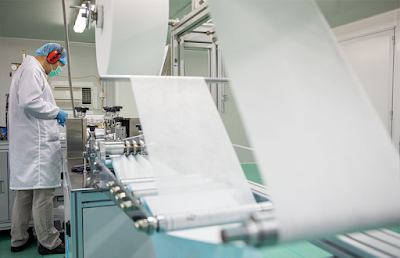Budget: Always keep to your budget, capital investment, marketing and advertising, and, most importantly, a contingency plan in case you lose money in the first quarter. Continuously tapping your budget line is a good idea because it will work as a backbone for expansion in different departments.
Registration Act: Whatever course you choose, you must register your company as a private limited company, a public limited company, or a proprietorship plan with the Ministry of Corporate Affairs.
Great Infrastructure: To set up machinery, equipment, labourers, and personnel to manufacture masks using the correct raw materials, you'll need a legal place (office space with no legal conflicts with the government). We require a consistent supply of polypropylene, just like we do for N95 masks (a material that has high efficiency, is perfect for particle filtration and has been approved by CDC).
Machinery: Instead of renting out machinery, you should buy it to ensure a proper flow of your manufactured masks.
Requirements: Each mask must pass a series of tests to determine its level of protection. Medical face masks are classified as medical equipment and are subject to national laws. Regulations will lay out the legal requirements for ensuring that medical face masks provide the bare minimum of protection against the threats they are meant to guard against. The mentioned performance standards list specific requirements by classification. Like:
- Registration and approval
- Classification designations
- Marking and labelling
- Particulate Filtration Efficiency (PFE)
- Bacterial Filtration Efficiency (BFE)
- Differential pressure (breathability)
- Blood penetration resistance
- Flammability
- Microbial cleanliness
- Biocompatibility
Quality Check: Examine the product or material to see if there is a compelling rationale to continue with product development. It will save you time and money by eliminating the need for unneeded testing. A complete test, including a test report and authorisation that is ready for certification and, as a result, for usage after the Covid-19 epidemic. To ensure improved efficiency, a competent face mask factory would subject its masks to frequent quality checks.
Marketing channels: A brief view of market statistics is a great way to know the demand and needs of the common masses.












